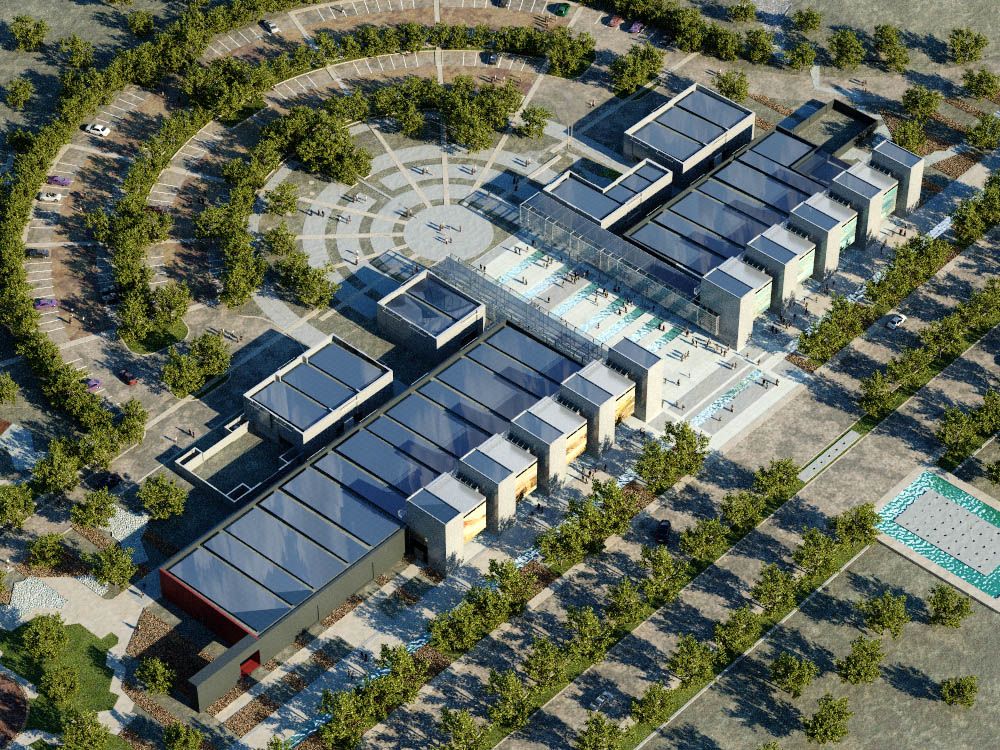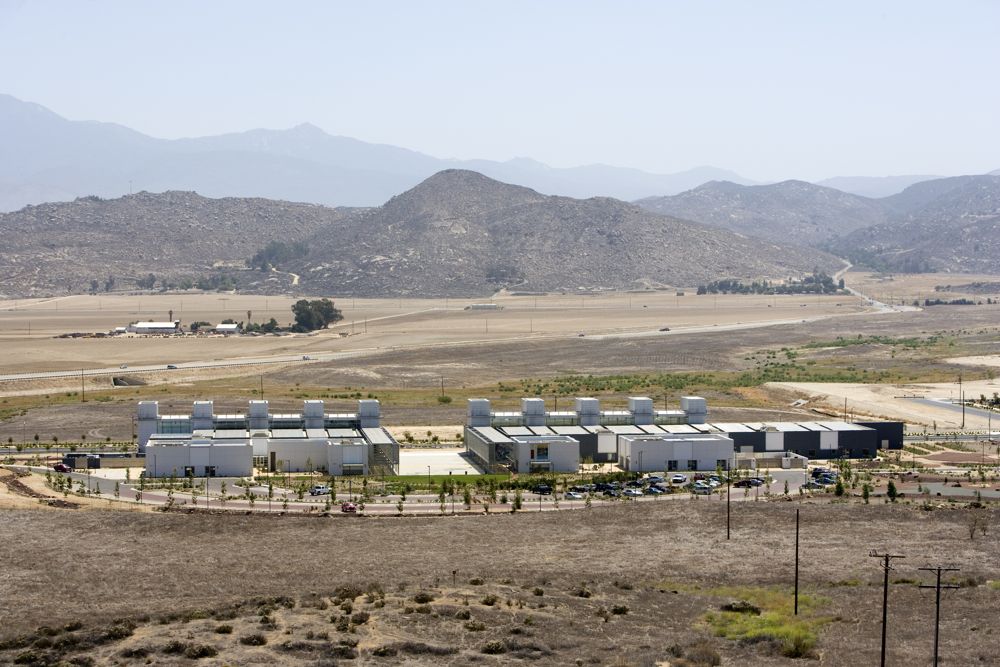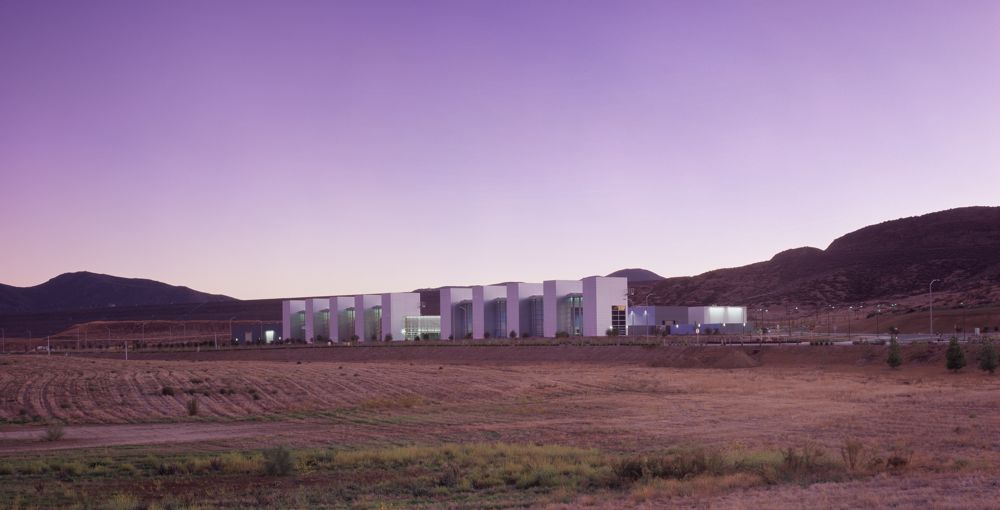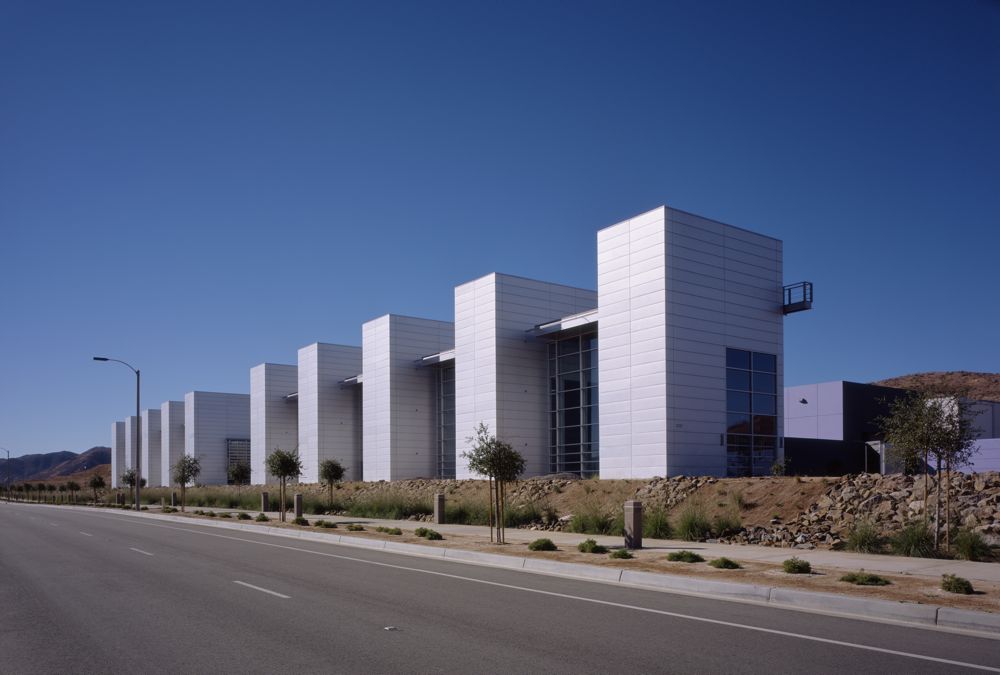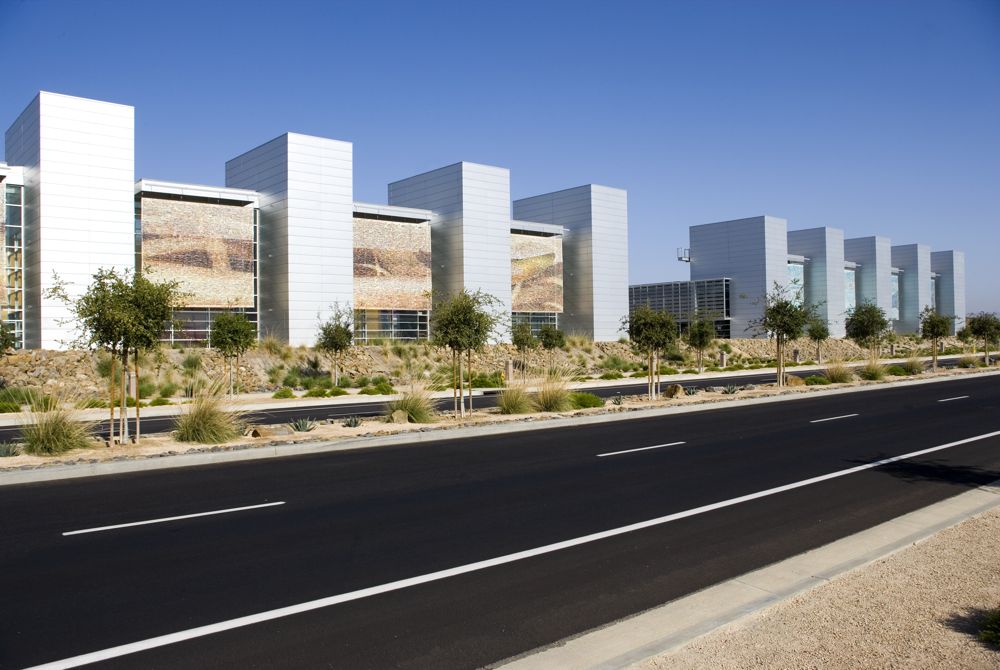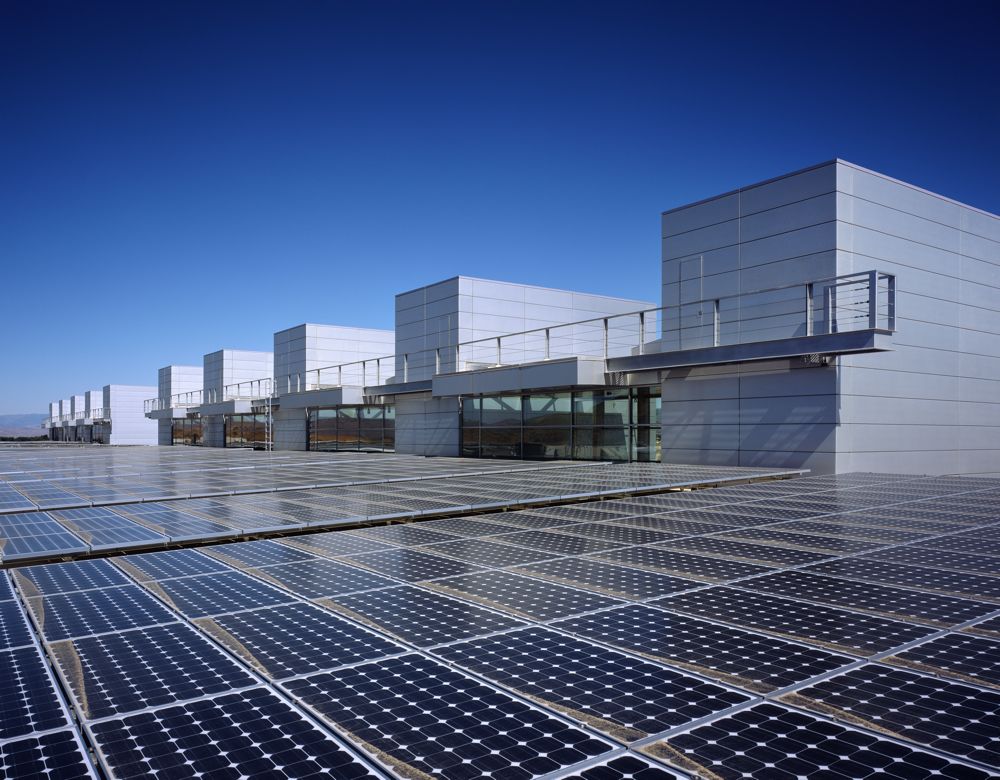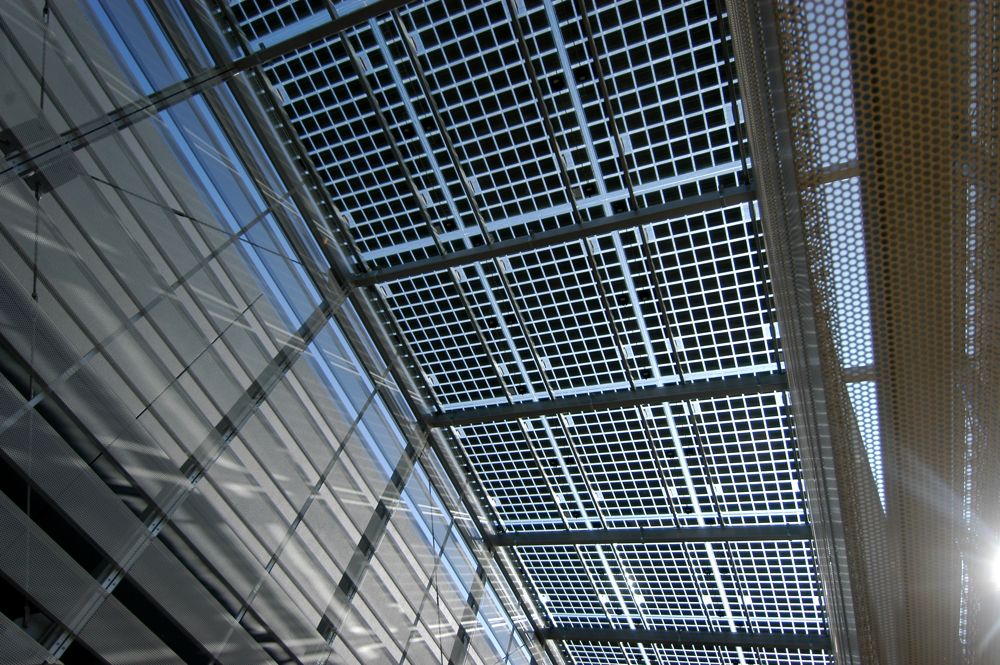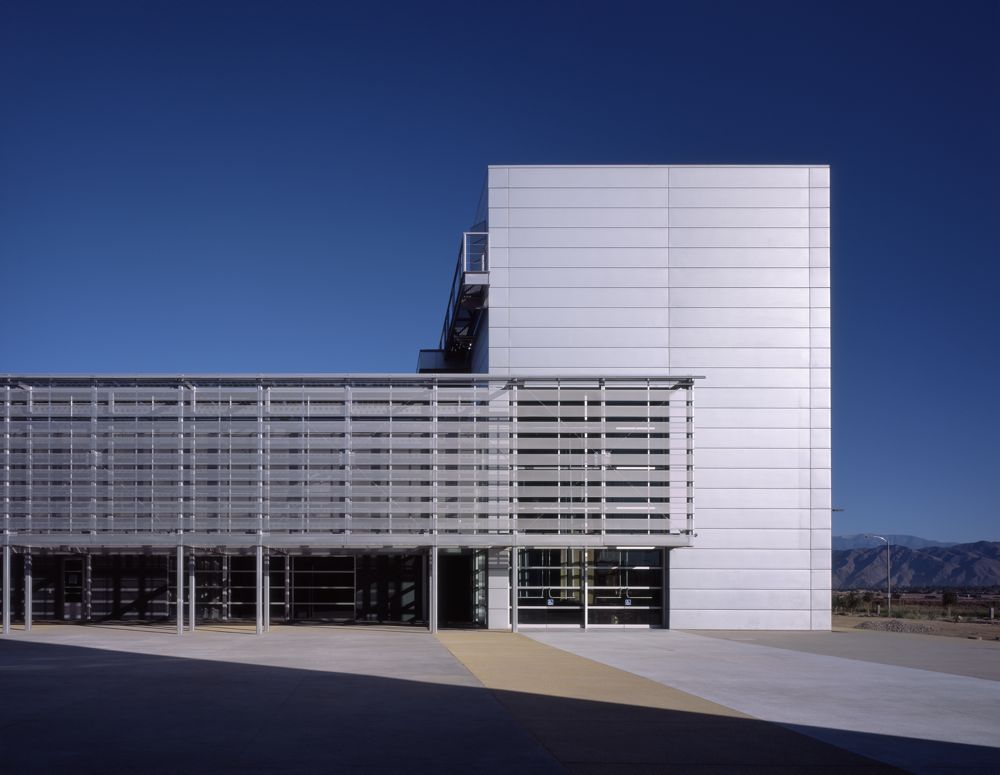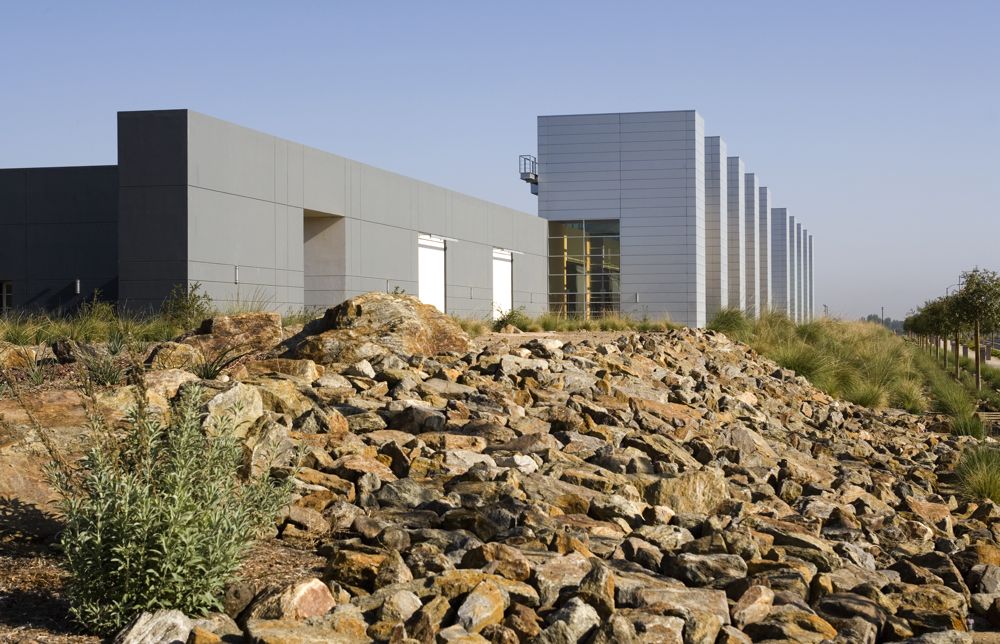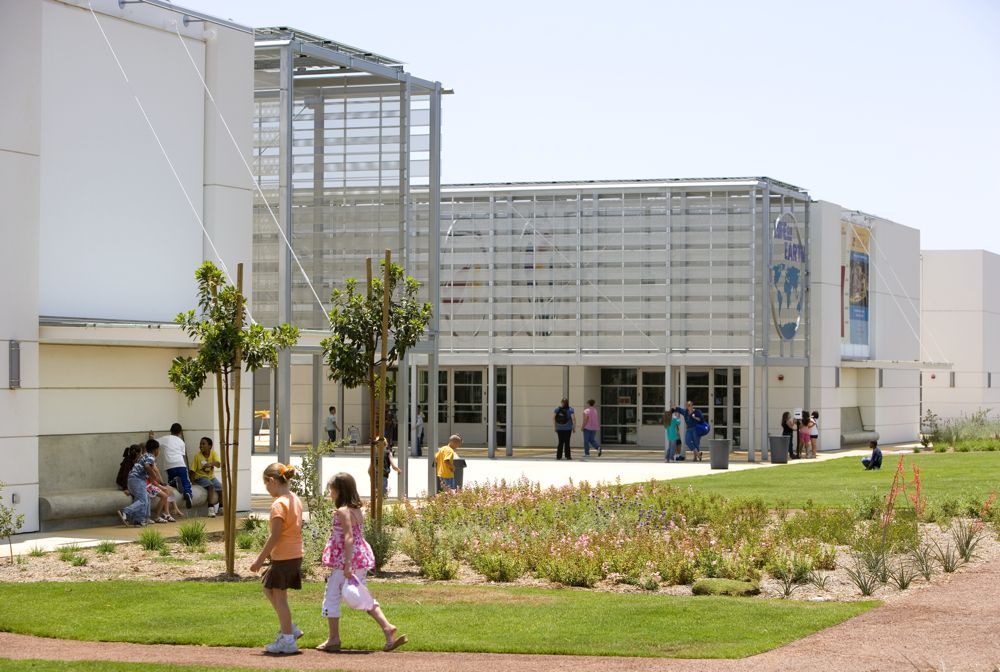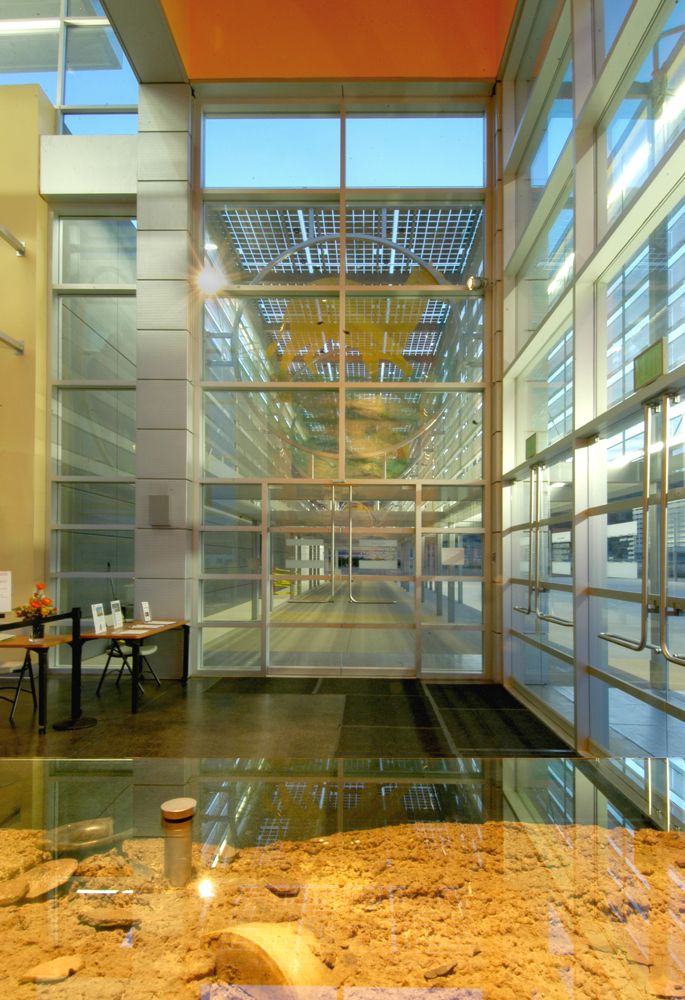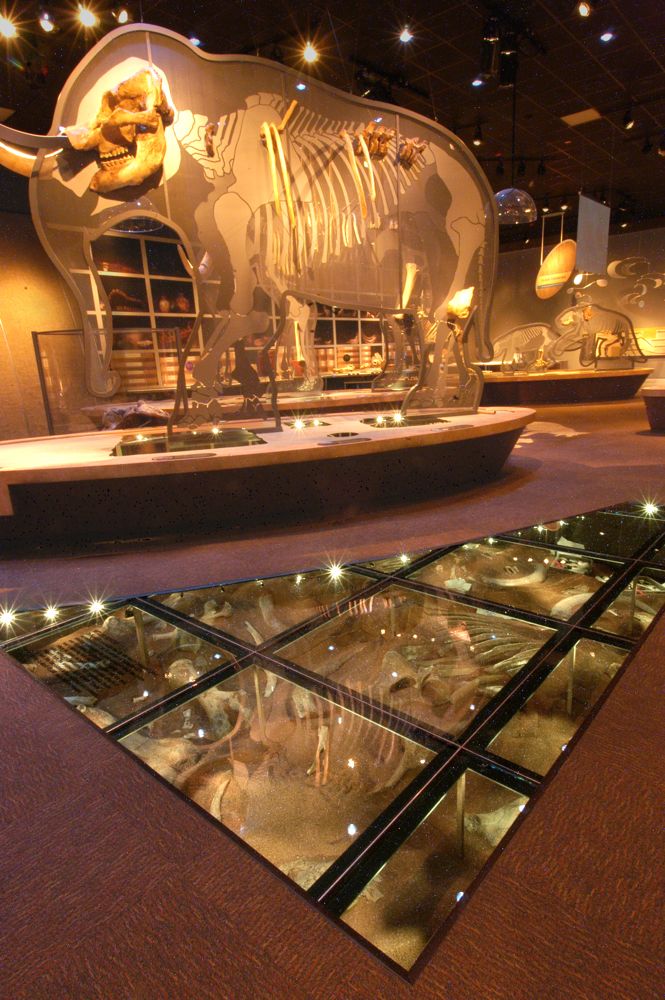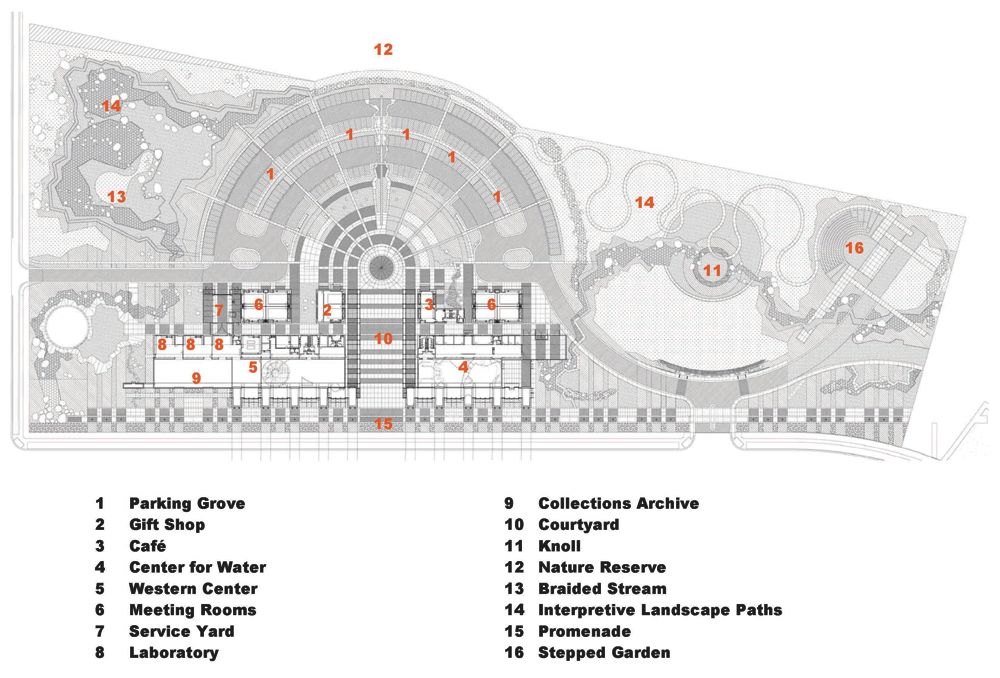Architects: Lehrer + Gangi Design + Build
Photos: Benny Chan, Tom Lamb, Micheal B. Lehrer
Where: Hemet, California
Design an engaging museum campus that celebrates the link between Southern California’s water infrastructure and the evolution of life. Phase 1 of the campus includes two museums, laboratories, classrooms, administrative offices, support facilities, gift shop, café, and interpretive/educational landscape. Phase 2 includes outdoor amphitheatre, front and courtyard water features, two auditoriums, and canal.
A crisp, modern design concept envelops the 17-acre campus, whose indoor and outdoor spaces mingle within the framework of airy floor plans and endless window walls. The two sister museums—The Center for Water Education and Western Center for Archaeology and Paleontology—are striking mélanges of metal and glass at the eastern entrance to Diamond Valley Lake.
The architectural idea for the museums is derived from the great history of the Metropolitan Water District’s monumental architecture, such as Gordon Kaufman’s pump buildings at Lake Havasu. A series of five slender steel towers blazes across each structure’s façade, providing an eloquent contrast against the azure desert skyline.
The monoliths are clad in crenellated steel, and evoke association with the minimalist sculpture of Donald Judd. These primal forms have a timeless quality sitting in the landscape, and recall the turbines in a row or the grills that the water goes through in its processing.
Translucent banners hang across 8,000 square feet of east-facing glass. Printed with pixilated images, the banners not only identify the museums (tusks for Archeology; lake for Water), but also mitigate the strong desert sun.
A broad plaza between the buildings frames the desert landscape. Latticed loggias on either side of the buildings give a dramatic processional feeling through filtered light. The layering of perforated steel slats and custom-made solar tiles adds depth and movement to the loggias.
The water museum incorporates such educational components as a simulated dam, two aquarium spaces, and interactive exhibits to tell the story of water. Through education and delight, the museum’s mission is to develop the public as stewards of water and water conservation. The archeological center, situated across the plaza, houses an interactive theater in the round, research lab, archaeology and paleontology labs, and extensive specimen storage. While the earthen dams were cut 100 feet into bedrock to create Diamond Valley Lake, remains from the Pleistocene era were found and are now on display at the archeology museum, which is twice as large in area as the water museum to accommodate storage.
Sustainability: To further connect the notions of water and life, and to educate the public, the buildings tell the same story as the exhibits inside. Thus, the building program is a “living” example of sustainability and conservation.
Green design elements cast the complex’s energy standards above the required minimum of California Title 24 Energy Conformance. The museum campus was built to achieve LEED (Leadership in Energy and Environmental Design) Platinum certification from the US Green Building Counsel, so incorporates efficient design features ranging from dual-flush toilets to broad expanses of solar panels. LEED Platinum status was conferred in April 2008.
The buildings’ rooftop photovoltaic installation has a 540-kilowatt solar-power system of 3,000 solar panels, and generates energy for 47 percent of the museum campus (68 percent of the museum buildings themselves). It requires minimal maintenance, and lowers the toxic outpour of carbon dioxide into the atmosphere. The solar-power system, whose roof-mounted panels provide shading that will extend the roof-covering life by about 25 percent, boasts a projected net savings of about $13 million during its lifespan. A specially designed solar power display in the Museum provides an interactive display so visitors can learn and request information on the solar power co-generation system.
The interior lighting design includes a network of electronic sensing devices and timers that optimize daylight harvesting and program zone lighting controls in all buildings. Office lighting is monitored by occupancy sensors or photoelectric controls, while outdoor banner projectors use minimal electrical power via light-emitting-diode (LED) lamps.
Heating and cooling are conducted through a sophisticated mechanical system of radiant flooring and forced air units. Translucent banners hanging in front of high-performance curtain walls at the east elevation mitigate heat radiation.
Landscape: The architecture and the landscape were conceived from the beginning as one. This arid campus has been designed as an environmental learning experience. The arrival procession introduces the principal qualities of water through the meandering braided stream toward the parking lot and the (Phase 2) water features at the front of the building, illustrating the importance irrigation and agriculture have played in the history of water infrastructure and use in California. Additional components of the outdoor learning exhibits include: archaeological digs, Paleolithic habitats, industrial water uses, cultural water uses, water conservation, water uses in the future, and local Native American settlements.
The approach to planting within the campus has been sensitively and thoroughly researched to maintain the delicate ecological balance of the region and to respond to the environmental conditions of the site. Biologists collaborated with the design team to establish a plant list that responded to and aligned with MWD’s mission statement on sustainability, its drought-tolerant approach to the landscape, and its commitment to educating the public about water conservation. Disease- and infestation-resistant plants that thrive in hot and dry climates were selected. The landscape utilizes shade trees and other landscape elements to create a comfortable environment to experience the interpretive exhibits.
Sustainable elements of the landscape program include braided streams containing pervious surfaces to provide storm water management by conveying rainwater to the water table. Irrigation systems are state-of-the-art drip systems that use reclaimed water. Surfaces are made of naturally colored red and green decomposed granite.
Thousands of large, sculptural stones were part of the detritus resulting from drilling 100 feet into bedrock during the building process. The rocks were seen as waste until the design team incorporated them as major landscape features.
Site Plan







